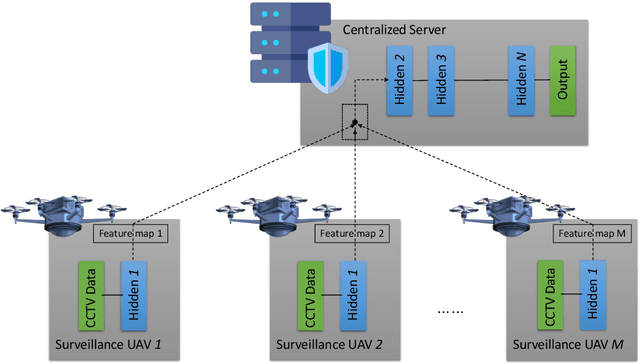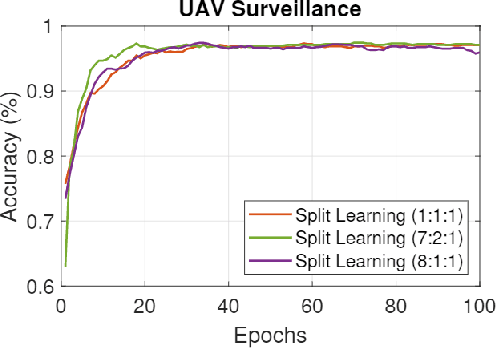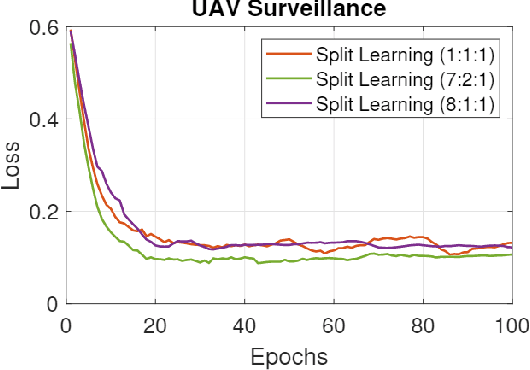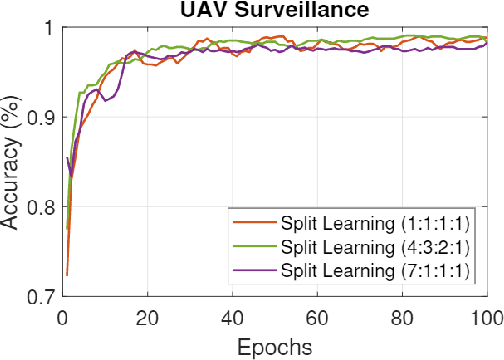Spatio-Temporal Split Learning for Autonomous Aerial Surveillance using Urban Air Mobility (UAM) Networks
Paper and Code
Nov 15, 2021



Autonomous surveillance unmanned aerial vehicles (UAVs) are deployed to observe the streets of the city for any suspicious activities. This paper utilizes surveillance UAVs for the purpose of detecting the presence of a fire in the streets. An extensive database is collected from UAV surveillance drones. With the aid of artificial intelligence (AI), fire stations can swiftly identify the presence of a fire emerging in the neighborhood. Spatio-temporal split learning is applied to this scenario to preserve privacy and globally train a fire classification model. Fires are hazardous natural disasters that can spread very quickly. Swift identification of fire is required to deploy firefighters to the scene. In order to do this, strong communication between the UAV and the central server where the deep learning process occurs is required. Improving communication resilience is integral to enhancing a safe experience on the roads. Therefore, this paper explores the adequate number of clients and data ratios for split learning in this UAV setting, as well as the required network infrastructure.
 Add to Chrome
Add to Chrome Add to Firefox
Add to Firefox Add to Edge
Add to Edge